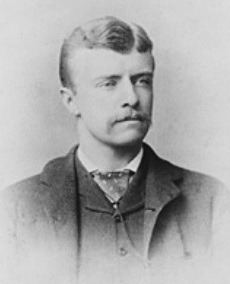“We have fallen heirs to the most glorious heritage a people ever received, and each one must do his part if we wish to show that the nation is worthy of its good fortune.” – Theodore Roosevelt
Even as a child, Theodore Roosevelt loved being outside. He like collecting tadpoles, sketching the flying birds that he sees, observing the tiny little ants moving. Theodore liked taking notes of everything he sees. Aside from exploring nature, he also loved reading books about it. As he grew up, his love for nature stays the same, or it expanded even more. He enjoyed visiting all the beautiful creations of nature all around the world.
In 1867, The Roosevelt Museum of Natural History started operating. One of the first specimens of the museum was the skull belonging to a seal. It was the 8-year old Theodore Roosevelt who asked the seal’s skull from its owner. Theodore collected everything he saw interesting. He even asked his families and friends to give him specimens if they found one. He also paid other kids to help him collect specimens for the museum. Through Roosevelt’s efforts and curiosity, the museum grew. Despite his love for his collection, he still donated some of his specimens to other museums. He contributed to museums like the American Museum of Natural History.
Growing up, Theodore Roosevelt traveled with his family to other countries like Egypt and Syria. He used this opportunity to explore more of the wonders of nature. Roosevelt also traveled to observe the beautiful and unfamiliar creatures in other places. He logged his studies in his notebook every time he had an encounter with the bewildering nature.
Theodore Roosevelt studied natural history at Harvard. Even he is now in Harvard, Roosevelt never stopped collecting specimens. However, in 1882, the Roosevelt Museum of Natural History ended its operations. So Roosevelt donated most of his specimens to the Smithsonian Museum. Despite the closing of the museum, Theodore Roosevelt’s love for nature remained.
Theodore Roosevelt was not called The Conservationist President for no reason. When Roosevelt became the US President in 1901, he used his platform to promote conservation to the people of America. Roosevelt worked so passionately in preserving the country’s wildlife and wilderness. While on his term, he launched programs regarding the preservation of nature. Throughout his period of office, he protected 230 million acres of land. It may be national parks, forests, monuments, or wildlife refuges.
During his rule, America went in the middle of the nature renaissance. Many Americans had movements for the study of nature. The cost of transportation in the country became lesser. Plus, the inventions of bicycles and binoculars, which made nature exploration effortless and more enjoyable. Theodore Roosevelt’s love for nature and wildlife extended throughout the whole country.
While he was the President, he established 150 million acres of land to be national forests. He gave rise to five national parks. These parks are Crater Lake in Oregon, Mesa Verde in Colorado, Platt National Park in Oklahoma, Sullys Hill in North Dakota, and Wind Cave located in South Dakota. Roosevelt also was the first one to establish Federal Bird Reserves. He gave rise to 51 of these when he was in office. In 1906, the Antiquities Act was signed, which gave Roosevelt the power to assign national monuments. With this, he gave rise to 18 national monuments in the United States. He protected over 230 million acres of land because of his intense passion for conserving and protecting wildlife and natural resources. Even after leaving his office, Theodore Roosevelt’s passion for the conservation of the natural wildlife and wilderness continued.
Today, the reign of Theodore Roosevelt remained a legacy in the whole of America. Despite his absence, his words and actions continued to affect the lives of people. Many people took by heart his way of approaching and appreciating the natural environment. A lot of scientists took after Roosevelt’s passion for conservationism. Scientists study the Palmyra Atoll that belongs to the Pacific Remote Islands Marine National Monument created under the legislation signed into law by Roosevelt in 2009.
The legacy of Theodore Roosevelt can be found all over America. Six national park sites in the country were dedicated to United States’ conservationist president. When people tried to exploit the natural resources for their gain, Theodore Roosevelt fought and used his power to provide a counterbalance to protect and preserve nature. Roosevelt was right. Nature truly is the most glorious heritage we have ever received, and we must do our part to help conserve nature and its beautiful and marvelous fortune.

